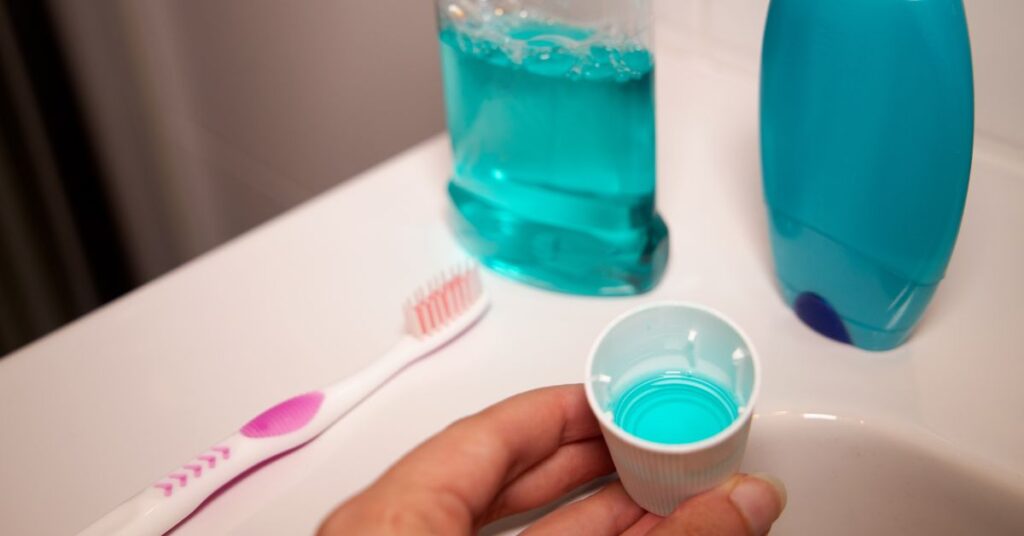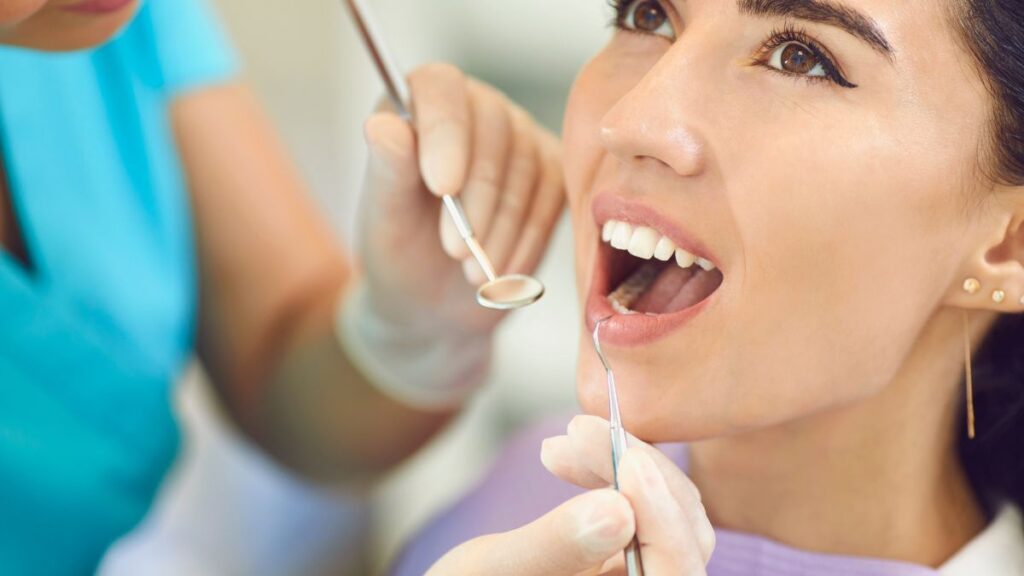
Introduction
Fluoride, a mineral often lauded for its remarkable Benefits of Fluoride, plays a crucial role in safeguarding your oral health. we embark on a journey to explore the multifaceted world of fluoride. But first, let’s establish the foundation by understanding the importance of dental health and grasping the fundamentals of what fluoride truly is.
The Importance of Dental Health
Dental health is a cornerstone of our overall well-being. A radiant smile not only boosts confidence but is also a testament to our commitment to maintaining a healthy lifestyle. Beyond aesthetics, our oral health influences various aspects of our daily lives.
- Oral Function: The ability to eat, speak, and smile without discomfort or pain depends on the state of our teeth and gums.
- Prevention of Dental Issues: Good dental health reduces the risk of painful conditions like cavities, gum disease, and tooth sensitivity.
- General Health: Emerging research suggests a link between oral health and broader health issues, including cardiovascular disease and diabetes.
Understanding the profound impact dental health has on our lives is a compelling reason to delve into the world of fluoride.
What Is Fluoride?
Fluoride is a natural mineral found in various sources, including water, soil, and certain foods. Its role in dental health is paramount, primarily owing to its ability to strengthen tooth enamel and combat the onset of tooth decay. The mineral acts as a defender of your pearly whites, creating a robust shield against the acids and bacteria that threaten your oral health.
Key Points About Fluoride:
- Tooth Enamel Fortification: Fluoride helps in the remineralization process of tooth enamel, making it more resistant to acid erosion.
- Cavity Prevention: By inhibiting demineralization and enhancing remineralization, fluoride reduces the risk of cavities.
- Safe Usage: When used in appropriate amounts, fluoride is a safe and effective tool for maintaining dental health.
Understanding Fluoride

Natural vs. Artificial Fluoride
Fluoride, in the context of dental health, can be categorized into two main types: natural fluoride and artificial fluoride. Understanding the differences between these forms is key to comprehending the sources and applications of fluoride.
Natural Fluoride:
- Origin: Natural fluoride occurs in varying concentrations in water sources, soil, and certain foods.
- Source: It is primarily derived from geological formations and can vary in concentration based on geographical location.
- Beneficial Aspect: The presence of natural fluoride in water sources can provide a degree of protection against tooth decay.
Artificial Fluoride:
- Origin: Artificial fluoride, also known as supplemental fluoride, is the result of the deliberate addition of fluoride compounds to public water supplies, dental products, and dietary supplements.
- Source: It is typically sourced from industrial-grade fluoride compounds, carefully regulated to ensure safe concentrations.
- Beneficial Aspect: Artificial fluoride allows for controlled and standardized delivery of fluoride, enhancing its dental health benefits.
How Does Fluoride Work?
To fully grasp the value of fluoride, it’s essential to understand how it functions to protect your teeth. Fluoride’s effectiveness lies in its interaction with tooth enamel and its role in remineralization.
Key Mechanisms:
- Remineralization: Fluoride helps to remineralize tooth enamel, reversing the initial stages of tooth decay by reinforcing weakened areas.
- Demineralization Prevention: Fluoride forms a protective shield on your teeth, making it more resistant to the acids produced by oral bacteria.
- Strengthening Enamel: Fluoride fortifies the enamel, making it less susceptible to damage and erosion.
History of Fluoride Usage
The application of fluoride in dental care is not a recent discovery; it has a rich historical background. A brief journey through the timeline of fluoride’s role in dental health provides insight into its gradual acceptance and widespread usage.
Historical Milestones:
- Early Observations: Ancient cultures like the Greeks and Romans noticed the impact of naturally occurring fluoride in water on dental health.
- Fluoridation Trials: In the early 20th century, researchers began conducting trials to determine the effects of adding fluoride to public water supplies.
- Widespread Implementation: The mid-20th century witnessed the widespread adoption of community water fluoridation programs in the United States and later, across the world.
Understanding the historical progression of fluoride in dentistry illuminates its evolution from an intriguing observation to a globally recognized and essential component of dental care.
The Benefits of Fluoride for Dental Health

Stronger Teeth
One of the primary benefits of fluoride is its role in fortifying tooth enamel. This mineral is like a supercharger for your teeth, making them more resilient and better equipped to withstand the challenges of daily life.
How Fluoride Strengthens Teeth:
- Enamel Remineralization: Fluoride encourages the remineralization of weakened enamel, effectively reversing the early stages of tooth decay.
- Enhanced Resistance: The remineralized enamel is less susceptible to acid attacks, thereby reducing the risk of cavities.
Prevention of Tooth Decay
Fluoride’s most famous achievement is its ability to thwart the onset of tooth decay. By acting as a protective shield for your teeth, it helps prevent cavities, which are not only painful but can lead to more severe dental issues.
Fluoride’s Role in Preventing Cavities:
- Reduction of Acid Attack: Fluoride fortifies enamel, making it more resistant to the acids produced by oral bacteria.
- Inhibition of Demineralization: It inhibits the process of demineralization, where minerals are stripped from the tooth’s surface.
Reducing Sensitivity
Tooth sensitivity can be an uncomfortable and at times, painful condition. Fluoride can come to the rescue by reducing sensitivity, allowing you to enjoy your favourite hot or cold beverages without wincing.
How Fluoride Helps with Sensitivity:
- Desensitizing Effect: Fluoride helps in sealing tiny openings or tubules in the dentin, the layer beneath the enamel, which can lead to sensitivity.
- Improved Comfort: With fluoride’s assistance, you can savour your ice cream or enjoy a cup of hot tea without discomfort.
Benefits for Children
Children, with their developing teeth, can reap substantial advantages from fluoride. It aids in the formation of strong, resilient teeth right from the early stages.
Why Fluoride Is Beneficial for Children:
- Protection Against Decay: Fluoride strengthens primary teeth, providing protection during the crucial formative years.
- Reduced Future Dental Issues: Stronger teeth in childhood can lead to better oral health in adulthood, reducing the likelihood of extensive dental work.
The Wider Health Benefits

Fluoride and Bone Health
While fluoride is often celebrated for its impact on dental health, it also plays a significant role in maintaining the strength of your bones.
Key Points to Note:
- Mineralization of Bones: Fluoride contributes to the mineralization of bones, making them stronger and more resistant to fractures.
- Preventing Osteoporosis: Adequate fluoride intake is linked to a reduced risk of osteoporosis, a condition characterized by fragile bones.
Fluoride in Water Supply
Community water fluoridation is a widespread practice aimed at enhancing public health by optimizing fluoride levels in drinking water. It’s a simple and effective means of ensuring that a broader population benefits from fluoride’s protective qualities.
How Community Water Fluoridation Works:
- Precise Control: Water authorities carefully adjust fluoride levels to maintain optimal concentrations that promote dental health without causing harm.
- Widespread Impact: By adding fluoride to the communal water supply, everyone who drinks the tap water benefits from the protection against tooth decay.
Fluoride in Oral Care Products
Fluoride’s presence in oral care products, such as toothpaste and mouthwash, amplifies its positive impact on dental health.
The Role of Fluoride in Oral Care Products:
- Enamel Strengthening: Fluoride toothpaste reinforces tooth enamel, offering an extra layer of protection against decay.
- Fighting Bacteria: Fluoride in mouthwash helps combat harmful bacteria that can lead to cavities and gum disease.
Fluoride Application Methods

Fluoride application is a key aspect of maintaining optimal dental health. This chapter explores the various methods of applying fluoride, both professionally and at home, to ensure your teeth are well-protected and resilient against decay.
Community Water Fluoridation
What Is Community Water Fluoridation?
Community water fluoridation is the process of adding controlled amounts of fluoride to public water supplies. This is a well-established and highly effective method of providing fluoride to an entire community, benefiting individuals of all ages.
How Does It Work?
Fluoride is added to the public water at a precise concentration, usually around 0.7 parts per million (ppm). This low but effective concentration helps reduce tooth decay without causing harm. When residents consume tap water, they benefit from the fluoride’s protective effects.
Benefits of Community Water Fluoridation
- Community-Wide Protection: The entire population served by the water supply receives the benefits of fluoride.
- Cost-Effective: It’s an economical way to reach a large number of people.
- Prevents Tooth Decay: Research has shown a significant reduction in cavities in communities with water fluoridation.
Topical Fluoride Application
Professional Dental Treatments
Dental professionals can provide more concentrated fluoride treatments. Here’s what you need to know:
Fluoride Gels: These gels contain higher concentrations of fluoride (usually 12,000 ppm) and are applied directly to the teeth for a few minutes.
Fluoride Varnish: A varnish with fluoride (usually 22,600 ppm) is applied to the tooth’s surface. It adheres to the enamel, providing prolonged protection.
At-Home Fluoride Products
Toothpaste and Mouthwash
Most commercially available toothpaste and mouthwash contain fluoride. These are the most convenient methods of at-home fluoride application. Key points:
Toothpaste Concentrations: Look for toothpaste with fluoride concentrations between 1,350 ppm and 1,500 ppm for effective protection.
Mouthwash: Some mouthwash products also contain fluoride, which can provide an extra layer of protection. Always follow the instructions on the product label.
Choose Fluoride Wisely: Ensure that you and your family use fluoride toothpaste and mouthwash as directed. Be cautious with children to prevent them from swallowing toothpaste.
Incorporating Fluoride into Your Dental Routine

Choosing the Right Toothpaste
Why Toothpaste Selection Matters
Selecting the right toothpaste is crucial because it determines your exposure to fluoride. Here are some key tips to consider:
Fluoride Content:
- Look for toothpaste with fluoride concentrations between 1,350 ppm and 1,500 ppm. This range is considered effective in preventing tooth decay.
ADA Seal of Approval:
- The American Dental Association (ADA) evaluates toothpaste for safety and effectiveness. Choosing a toothpaste with the ADA Seal is a reliable way to ensure quality.
Avoid Whiteners and Tartar Control:
- Toothpaste with added whiteners or tartar control may have less fluoride. If you prioritize fluoride, choose a toothpaste that’s primarily focused on oral health.
Age-Appropriate:
- Consider the specific needs of your family. For children under six, use a fluoride toothpaste with a lower concentration to prevent fluorosis.
Proper Brushing Techniques
The Importance of Effective Brushing
Using fluoride toothpaste efficiently is key to maximizing its benefits. Follow these brushing techniques:
Brush Twice Daily:
- Brush your teeth in the morning and before bedtime for at least two minutes each time.
Soft-Bristled Brush:
- Use a soft-bristled toothbrush to avoid damaging your gums and enamel.
Use the Right Amount:
- A pea-sized amount of toothpaste is adequate. Excessive toothpaste can lead to unnecessary swallowing of fluoride.
Gentle Pressure:
- Brush with gentle, circular motions to clean all surfaces of your teeth. Avoid aggressive brushing to prevent enamel damage.
Don’t Forget Your Tongue:
- Brush or scrape your tongue to remove bacteria and prevent bad breath.
Regular Dental Checkups
The Role of Professional Dental Care
While at-home dental care is vital, regular dental checkups are equally important. Here’s why:
Early Detection:
- Dentists can detect dental issues in their early stages, preventing them from progressing into more severe problems.
Professional Cleaning:
- Professional cleanings remove built-up plaque and tartar, keeping your teeth healthy.
Customized Advice:
- Dentists can provide personalized advice on fluoride use and overall oral health.
Conclusion
Fluoride isn’t just an optional addition to your dental care routine; it’s a fundamental element in maintaining a beautiful and functional smile. By embracing fluoride, you’re taking an essential step towards healthier teeth and gums.
By taking these steps and incorporating fluoride into your daily dental care routine, you’re actively contributing to better dental health.
In the journey for a healthier smile, fluoride is your steadfast companion. Embrace the Top 5 Benefits Of Fluoride and make it a central part of your dental care regime. Your teeth, your smile, and your overall well-being will thank you for it.
For personalized advice and expert care, visit Sri Sanjeevini Dental. Our experienced team is here to help you achieve optimal dental health. Schedule your consultation today!


